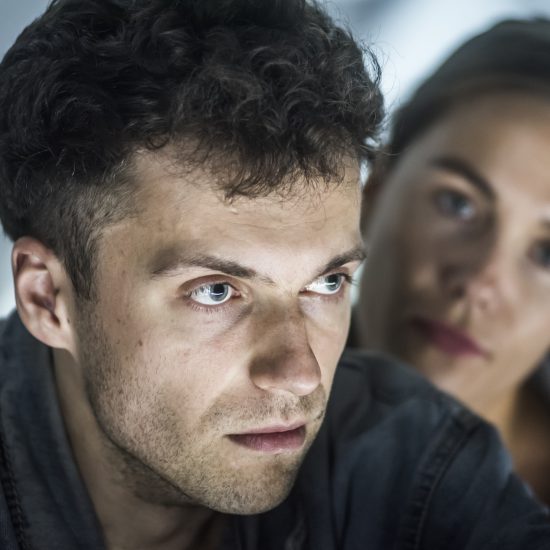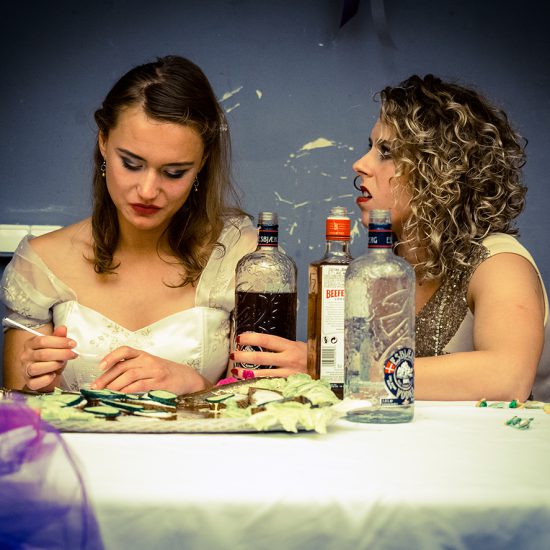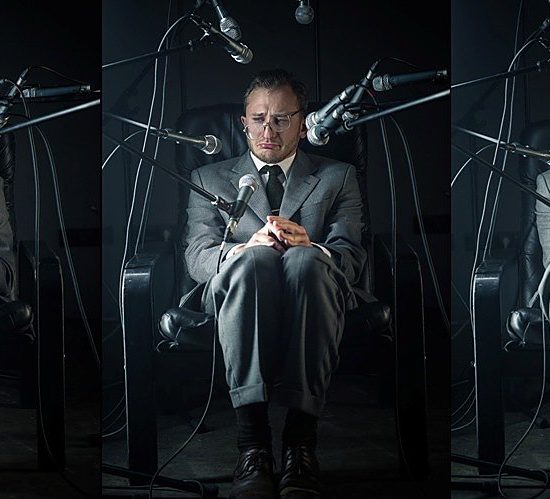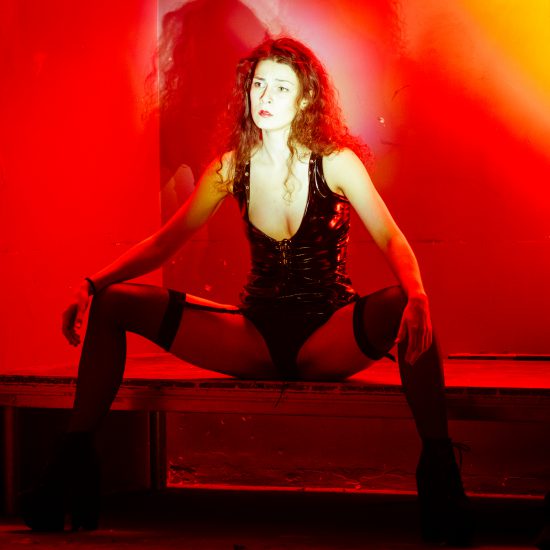Where is the creative homeland?
In late August, at the Henrik Ibsen Festival in Norway the director Oskaras Koršunovas presented his production of “Peer Gynt”. Critics have called the play “a hit,” described it as “refined, unusually baroque theatre” and believe that it is bound “to leave a mark.” In this interview the director elaborates on this production, the Norwegian culture and his most recent discoveries.
“Peer Gynt” is a rare guest on the Lithuanian stage, while it is the most produced Ibsen’s work in the world. Why did you decide to take on this play in the playwright’s homeland?
I was invited by the Norwegian National Theatre to create “Peer Gynt”. It was a huge challenge for me. “Peer Gynt” is probably the most important literary work for Norwegians, which they know almost by heart. On the one hand, directing this play in Norway is a huge responsibility, but on the other, there is a large degree of freedom, as you work with material, which is familiar to all. Since I was free from storytelling, I had the opportunity to use the play as a means of discussion with the audience.
Norwegians understood some things, which would most probably not be understood anywhere else. For example, when in the scene of Peer Gynt’s death the first line of the play was uttered – his mother Åse’s phrase “Peer, you are lying,” – the audience began to applaud. This can only happen in a place where the audience is that well familiar with the literary work. I have thought about directing this play in Vilnius, as for us it is no less relevant. Peer Gynt was a refugee, for whom there was no place in his own country. In modern language we call such people emigrants. The play has a very famous scene, called the onion monologue. In it Peer peels an onion, layer after layer, and identifies each layer with one of his masks: a prophet, an entrepreneur, a persecuted murderer… He has had many roles in his life and in that scene he ponders on all elements of his existence. Finally, he gets to the core of the onion, and finds nothing there. So, in the end, Peer Gynt does not find himself. In the existential sense he has betrayed his country, and himself. He wants to remain himself, but trying to do this repeatedly, betrays himself. This is exactly the state that Lithuania is in at the moment.
What qualities of the main character are so fascinating to the Norwegian audience?
This hero was glorified in folk tales and legends long before Ibsen. The playwright used those legends when he wrote his play. Peer Gynt is the most beloved national character, but he is everything but a Norwegian (laughs). He is an upstart: unreserved, lying, extremely self-centred, in love with himself and life. In contrast, Norwegians are very public-spirited people endowed with a strong sense of citizenship. It is probably one of the most perfect societies, one that respects agreements and rules of coexistence. Peer Gynt, on the contrary, did not respect anything. His reserved and tactful countrymen love this upstart of theirs very much.
The theatre organized a trip to the mountains. In fact, not until you rise to the height of two kilometres and enter the fog, saunter in it unable to see further than a meter away from you and not knowing whether you are far from the abyss, can you start to realize what Peer Gynt means to the people who grew up in this hostile natural environment. They see this character as an adventure seeker, a strong man. His vitality resembles the Russian doll “Vanka vstanka”, which rights itself when pushed over.
But our performance was not about a crazy adventurer – it was about an old man. He returns from his lifelong journey and suddenly realizes that he has no place to come back to. His country has forgotten him. He does not have a home just like he does not have himself. We have produced an existential play, in which Peer Gynt asks what it means to be oneself. The problem is discussed in the fifth act of Ibsen’s play, but no one so far has given this topic so much attention. There is also the romantic line of the play – the loving Solveig waits for him throughout his journey. The role of Solveig is played by the brilliant Kjersti Botn Sandal, who, like Eglė Mikulionytė and Rasa Samuolytė, has a great musical spirit and an amazing sense of the stage. The actress offered an unexpected solution of that line – on the stage she appears next to Peer Gynt (Øystein Roger) all the time.
You have worked with this actor before. Could you tell us more about him?
Roger is perhaps the best Norwegian actor, whose Lithuanian counterpart would be Dainius Gavenonis. Together we have worked in five performances. When seven years ago in Oslo I directed “The Road to Damascus” by August Strindberg, he played the complex main character. It was very hard work and Roger was on the verge of madness. For the first time in my life I was afraid for an actor. When playing Peer Gynt he was able to stay very energetic and lively, and sometimes even parodied those Norwegian traditions which portray this character as a strong, healthy guy. The artistic director of the theatre Hanne Tømte invited me to Oslo, saying that Roger was waiting for me like Solveig. He had to play the country’s national hero.
You have directed six plays in Norway. What can you say about the country’s theatre traditions?
The country has only four and a half million people – just a little more than Lithuania. They created their identity through culture, as well as through theatre, so the traditions are very strong. Norwegians have such distinguished authors as Ibsen, Grieg, Knut Hamsun, and good contemporary playwrights, such as Jonas Fosse. But the spirit of the country is Protestant. We may put it like this: no one there believes in God, but people bear the Ten Commandments in mind. The Protestant spirit is also felt in the theatre, which is minimalist, because the word in their culture is essential and decisive. They have deliberately shed visuality and mystery and you almost won’t see this in their theatre. This performance shocked them in the good sense of the word. It is intense – with theatricality and metaphors galore. Norwegians got to see the Lithuanian theatre in its essence. For people who are used to moderate stage design, music and acting, it was totally unexpected.
Vytautas Narbutas created a truly impressive set design: from outside the stage looks like a circus, but it is a macabre purgatory. The Button-moulder, the passenger and other mystical characters looked like circus clowns, but they spoke most important, most serious words. The powerful atmospheric music by composer Antanas Jasenka and Vesta Grabštaitė’s choreography have contributed immensely to the play.
When working on the play, you consulted folklorists, literary scholars, psychologists, and other specialists. Was it only the director who received consultations or the entire team?
One of these specialists was the Polish cultural historian Nina Witoszek. She is the author of the book “Norwegian Nature Mythologies”, which has also been published in Lithuanian. It is worth reading for people who want to learn something new not only about the country of the trolls, but also about themselves. The actors and stage workers, and even the administration also attended the lectures given by specialists. In the beginning the Scandinavian tradition of doing everything together annoyed me. For example, twice a week they hold meetings where actors, dressers and other theatre workers solve various problems or try to predict possible problems. Later I realized: this is how the society is organized from the inside. There, everything is solved in cooperation, while in Lithuania, as well as in Russia, we have vertical leadership – there is the director, the artistic director, and no debates. Perhaps this hierarchical system is good in large countries, like the USA or Russia, but Lithuanians should follow the Norwegian example.
A few Norwegian reviews of your work have been translated into Lithuanian. It seems you have impressed the audience as well as the critics. Tell us what you think of your latest project.
Because I was working with a play that is so important, well-known and awaited, I was able not to think about the Norwegians’ expectations. It rarely happens in theatre. I was able to do what I wanted, and it was the reason of the success of this performance. I feel free to talk about success, because I have also had a failure at the Norwegian National Theatre – “The Lower Depths” by Maxim Gorky, which I directed in 2009. But my best play, “The Road to Damascus,” was also created there. Among my best work: “Cleansed”, which I directed in Stockholm, “Those Eyes” – in Stavanger and “Taming of the Shrew” – in Paris. Due to the current theatre organization, financial and creative capabilities, my ideas have been best realized abroad. I am an artist of the world. However, it is sad that some of my most mature work has been created outside Lithuania. The question is: where is the creative homeland? But if I had not had a theatre and the possibility to constantly create, I might not have been able to create such plays at all. If there hadn’t been “A Midsummer Night’s Dream” there probably would not have been “The Taming of the Shrew” either.
In a conversation with writer Jurga Ivanauskaite you have said that after spending some time in the field of theatre one can more or less predict the audience’s reactions. Is it possible that when you work on a play in Lithuania, you have difficulty distancing yourself from this experience and feel constrained by the audience?
No matter where I work, it is always a challenge for me. Our theatre is often accused of being too commercial, but I as well as the actors have always looked for something new; we have never been concerned with pleasing the audience. And yet, the viewer accepts us. In our work we have always felt responsible for the theatre, and what we did came from our souls. Therefore, the OKT is a democratic and elite theatre, a theatre should be like. We have our audience in Lithuania, but for twenty years, since our very first performance “There to be Here” our plays have been to all the major European festivals. There are many plays that travel, but often they only have the audience of the festival – they may be of interest to critics, but incomprehensible to the townspeople. In contrast, “A Midsummer Night’s Dream”, which has been part of numerous theatre festivals in Europe, Asia, and South America, still collects the full 800-seat hall of the Theatre Arena.
You have returned from working on a very Norwegian production and are about to start working on an extremely Lithuanian one – a play by Justinas Marcinkevičius at the Lithuanian National Drama Theatre. Maybe there you have discovered something you will be able to use here?
To dare to take on the responsibility and to remain free at the same time is the big lesson that I learned in Norway. I hope it will help my work on “The Cathedral.”
Interviewer Monika Jašinskaitė, 7 meno dienos, issue 33 (1001), September 21, 2012.



